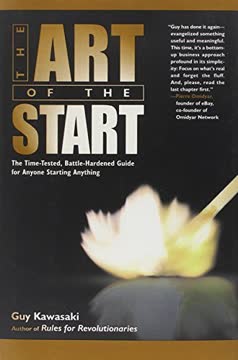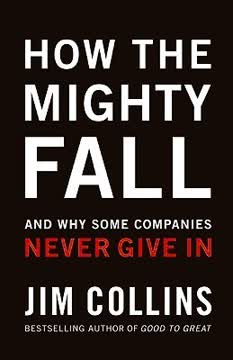Key Takeaways
1. Position your brand in the mind of the consumer
Positioning is not what you do to a product. Positioning is what you do to the mind of the prospect.
The essence of positioning is to create a unique place for your brand in the consumer's mind. This involves understanding how your target audience perceives your product or service in relation to competitors. To achieve this:
- Identify your target audience and their needs
- Analyze your competitors' positions
- Determine your unique selling proposition (USP)
- Develop a clear and consistent message
Effective positioning requires a deep understanding of consumer psychology and market dynamics. It's not about changing your product, but about influencing how it's perceived.
2. Be first or create a new category
The easy way to get into a person's mind is to be first.
First-mover advantage is crucial in positioning. If you can't be first in an existing category, create a new one. Examples of successful first movers include:
- Coca-Cola in cola drinks
- IBM in computers
- Xerox in copiers
When you can't be first, consider:
- Creating a new subcategory (e.g., 7-Up as the "uncola")
- Repositioning existing competitors (e.g., Tylenol vs. aspirin)
- Finding an unoccupied niche in the market
Being first allows you to establish a strong position in the consumer's mind before competitors can react.
3. Focus on perception, not reality
In communication, as in architecture, less is more. You have to sharpen your message to cut into the mind. You have to jettison the ambiguities, simplify the message, and then simplify it some more if you want to make a long-lasting impression.
Perception trumps reality in positioning. Consumers make decisions based on their perceptions, not necessarily on facts. To shape perception:
- Simplify your message to its core essence
- Use clear, concise language
- Employ visual and verbal cues that resonate with your audience
- Consistently reinforce your chosen position
Remember that changing perceptions is difficult. It's often more effective to work with existing perceptions and gradually shift them in your favor.
4. Simplify your message in an overcommunicated world
The mind, as a defense against the volume of today's communications, screens and rejects much of the information offered it. In general, the mind accepts only that which matches prior knowledge or experience.
Cut through the noise by simplifying your message. In our overcommunicated society, consumers are bombarded with information. To stand out:
- Focus on a single, powerful idea
- Use short, memorable slogans or taglines
- Repeat your message consistently across all channels
- Avoid information overload in your marketing materials
Successful positioning requires sacrifice – you can't be everything to everyone. Choose one key benefit or attribute to emphasize and stick to it.
5. Use the prospect's existing mental ladder
To cope with complexity, people have learned to rank products and brands in the mind.
Leverage existing perceptions by understanding the mental "ladders" consumers use to categorize products and brands. Each product category is like a ladder in the mind, with brands occupying different rungs. To use this concept effectively:
- Identify the relevant ladder for your product
- Determine your current position on that ladder
- Find ways to move up the ladder or create a new one
If you can't be at the top of an existing ladder, consider creating a new category where you can be first (e.g., 7-Up as the "uncola" on the soft drink ladder).
6. Reposition the competition when necessary
To move a new idea or product into the mind, you must first move an old one out.
Strategic repositioning involves changing how consumers perceive your competitors. This can create space for your brand in the market. Effective repositioning tactics include:
- Highlighting competitors' weaknesses
- Exposing outdated assumptions about rival products
- Presenting your product as a superior alternative
Examples of successful repositioning:
- Tylenol repositioning aspirin as potentially harmful
- Stolichnaya vodka emphasizing its Russian origin vs. American-made "Russian" vodkas
Be careful not to engage in false or misleading claims when repositioning competitors.
7. Choose the right name for maximum impact
The name alone has enormous power in an overcommunicated society.
A powerful name can significantly impact your positioning success. When choosing a name:
- Make it memorable and easy to pronounce
- Ensure it communicates your key benefit or position
- Avoid generic or descriptive names that limit future growth
- Consider how it will translate across cultures (for global brands)
Examples of effective names:
- Head & Shoulders (communicates benefit)
- Apple (simple, memorable, and not limiting)
- Xerox (unique and became synonymous with copying)
Avoid the temptation to use initials or acronyms, which are often forgettable and meaningless to consumers.
8. Avoid the pitfalls of line extension
Line extension is a result of clear, hard-headed, inside-out thinking that goes something like this: "We make Dial soap, a great product that gets the biggest share of the bar-soap market. When our customers see Dial deodorant, they'll know it comes from the makers of the great Dial soap."
Resist overextension of your brand. While line extension may seem logical from an internal perspective, it often dilutes your brand's position in the consumer's mind. Potential risks include:
- Confusion among consumers about what your brand stands for
- Weakening of your core product's position
- Increased vulnerability to focused competitors
Instead of line extension, consider:
- Creating new brands for new products or categories
- Focusing on strengthening your core brand's position
- Using sub-brands when entering related categories
Examples of successful alternatives to line extension include Procter & Gamble's portfolio of distinct brands (Tide, Crest, Pampers) rather than a single "P&G" brand for all products.
9. Apply positioning to companies, countries, and yourself
You can position anything. A person, a product, a politician. Even a company.
Expand your thinking beyond products to apply positioning principles more broadly. This can include:
- Companies: Define a clear corporate identity and mission
- Countries: Develop a unique "brand" for tourism or investment
- Personal branding: Position yourself for career success
Key strategies for personal positioning:
- Define your unique strengths and expertise
- Identify your target "audience" (employers, clients, etc.)
- Develop a consistent personal brand across all touchpoints
- Network strategically to reinforce your position
Remember that positioning is an ongoing process. Continuously evaluate and adjust your position as markets, competitors, and personal circumstances evolve.
Last updated:
FAQ
What's "Positioning: The Battle for Your Mind" about?
- Core Concept: The book introduces the concept of "positioning," which is about creating a unique position in the mind of the consumer for a product, service, or brand.
- Communication Challenges: It addresses the challenges of communicating effectively in an overcommunicated society where consumers are bombarded with messages.
- Strategic Approach: The authors, Al Ries and Jack Trout, emphasize the importance of understanding the consumer's mind and positioning a product relative to competitors.
- Practical Examples: The book provides numerous examples from various industries to illustrate successful positioning strategies.
Why should I read "Positioning: The Battle for Your Mind"?
- Understanding Marketing: It offers a foundational understanding of marketing strategies that are still relevant today.
- Practical Insights: The book provides practical insights and strategies that can be applied to real-world marketing challenges.
- Timeless Principles: Despite being published decades ago, the principles of positioning remain applicable in today's digital and global marketplace.
- Influential Work: It is considered a classic in marketing literature and has influenced countless marketing professionals and strategies.
What are the key takeaways of "Positioning: The Battle for Your Mind"?
- Positioning is Key: The central idea is that positioning is about owning a space in the consumer's mind, not just about the product itself.
- Simplicity and Clarity: Successful positioning requires a simple and clear message that resonates with the target audience.
- Competitive Awareness: Understanding and leveraging the strengths and weaknesses of competitors is crucial for effective positioning.
- Consistency is Crucial: Maintaining a consistent message over time helps reinforce the position in the consumer's mind.
How do Al Ries and Jack Trout define "positioning"?
- Mind-Centric Approach: Positioning is defined as what you do to the mind of the prospect, not the product itself.
- Perception Over Reality: It focuses on the perception of the product in the consumer's mind rather than the actual product features.
- Strategic Differentiation: Positioning involves differentiating a product from its competitors by creating a unique mental image.
- Long-Term Strategy: It is a long-term strategy that requires consistency and reinforcement over time.
What are some examples of successful positioning strategies mentioned in the book?
- Avis vs. Hertz: Avis successfully positioned itself as the No. 2 car rental company with the slogan "We try harder."
- 7-Up as the Uncola: 7-Up positioned itself as the "Uncola," differentiating from the dominant cola drinks.
- Tylenol vs. Aspirin: Tylenol repositioned aspirin by highlighting its potential side effects, establishing itself as a safer alternative.
- Volvo's Safety Position: Volvo positioned itself as the safest car, focusing on safety features to differentiate from competitors.
What is the "line-extension trap" discussed in the book?
- Definition: Line extension involves using an established brand name for new products, which can dilute the brand's position.
- Short-Term Gains: While it may offer short-term sales boosts, it often leads to long-term brand confusion and weakened positioning.
- Examples: The book cites examples like Life Savers gum and Bayer non-aspirin, where line extensions failed to capture significant market share.
- Strategic Focus: The authors argue for maintaining a clear and focused brand position rather than extending the brand indiscriminately.
How does "Positioning: The Battle for Your Mind" address the role of names in positioning?
- Importance of Names: The book emphasizes that a product's name is crucial in establishing its position in the consumer's mind.
- Descriptive Names: Names that describe the product's benefit, like Head & Shoulders shampoo, can effectively communicate the brand's position.
- Avoiding Generic Names: The authors warn against using names that become generic, as they can lose their distinctiveness and legal protection.
- Examples: The book discusses successful names like DieHard for batteries and Shake 'n Bake for cooking products.
What is the "oversimplified message" concept in the book?
- Less is More: The authors advocate for simplifying messages to cut through the noise in an overcommunicated society.
- Clear Communication: A clear and straightforward message is more likely to be remembered and understood by consumers.
- Avoiding Complexity: Complex messages are often ignored or misunderstood, reducing their effectiveness.
- Examples: The book highlights successful campaigns that used simple messages, such as "Think small" for Volkswagen.
What are the best quotes from "Positioning: The Battle for Your Mind" and what do they mean?
- "Positioning is not what you do to a product. Positioning is what you do to the mind of the prospect." This quote encapsulates the core idea that positioning is about perception, not the product itself.
- "The mind, as a defense against the volume of today’s communications, screens and rejects much of the information offered it." It highlights the challenge of breaking through the clutter in an overcommunicated society.
- "The best approach to take in our overcommunicated society is the oversimplified message." This emphasizes the importance of simplicity in communication to ensure the message is received and remembered.
- "You can’t get there from here." This phrase is used to illustrate the futility of trying to compete head-on with established market leaders without a unique position.
How can the concepts in "Positioning: The Battle for Your Mind" be applied to personal branding?
- Define Your Position: Just like a product, individuals should define a clear and unique position in their professional field.
- Consistent Messaging: Maintain consistency in how you present yourself across different platforms and interactions.
- Leverage Strengths: Identify and leverage your unique strengths and experiences to differentiate yourself from others.
- Avoid Overextension: Focus on a specific area of expertise rather than trying to be all things to all people.
What is the "against" position strategy mentioned in the book?
- Competitive Positioning: The "against" position involves positioning a brand in opposition to a market leader to create differentiation.
- Avis Example: Avis used this strategy by positioning itself as the No. 2 car rental company, emphasizing its efforts to try harder than the leader, Hertz.
- Pepsi vs. Coke: Pepsi has often positioned itself against Coca-Cola, using campaigns that highlight its differences and appeal to younger audiences.
- Strategic Advantage: This strategy can be effective when a brand cannot compete directly with a dominant leader but can offer a compelling alternative.
How does "Positioning: The Battle for Your Mind" suggest handling competition?
- Repositioning Competitors: The book suggests repositioning competitors by highlighting their weaknesses or changing consumer perceptions about them.
- Tylenol's Strategy: Tylenol repositioned aspirin by focusing on its side effects, effectively changing consumer perceptions and gaining market share.
- Understanding Competitors: A deep understanding of competitors' strengths and weaknesses is crucial for developing effective positioning strategies.
- Avoiding Head-On Battles: The authors advise against direct competition with established leaders, recommending finding unique positions instead.
Review Summary
Positioning is a classic marketing book that introduces the concept of product positioning in consumers' minds. While some readers find it dated, many praise its fundamental principles as still relevant. The book emphasizes being first in a category, avoiding line extensions, and creating a unique brand identity. Critiques include repetitive content, outdated examples, and a focus on large companies. Despite these issues, many consider it essential reading for marketers, offering valuable insights on brand strategy and market differentiation.
Similar Books










Download PDF
Download EPUB
.epub digital book format is ideal for reading ebooks on phones, tablets, and e-readers.








